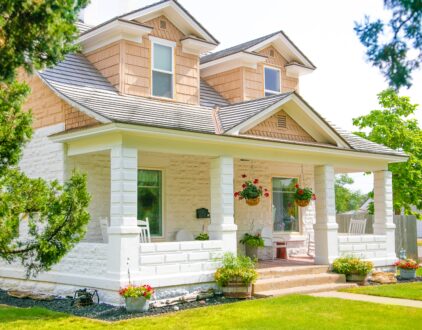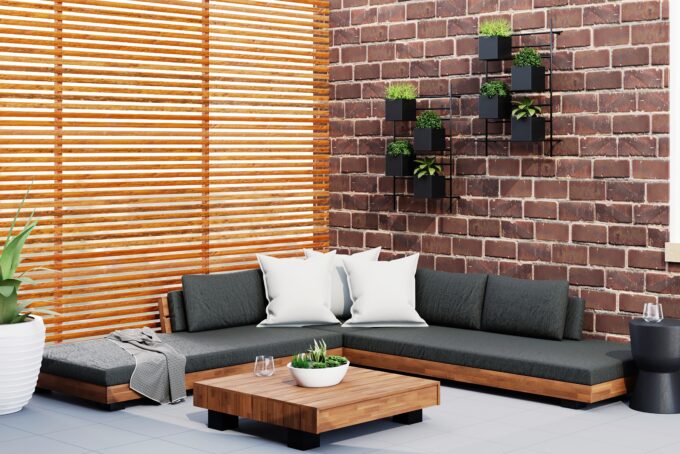One of the biggest things homeowners consider when shopping for a new house or apartment is space. It’s a luxury, and sometimes when we don’t have enough of it, we turn to storage solutions. Storage is so much of a hot commodity that, in the last 40 years, it has become one of the fastest-growing sectors of the U.S. commercial real estate industry. If you run out of room inside your home or have outdoor items and happen to have some additional space, be it a balcony or backyard, you’re in luck! However, there are a few things to consider with outdoor storage. Check out these do’s and don’ts to help you make the most of your space.
Do: Invest in quality storage solutions.
The outdoors is a different game entirely since you’re introducing elements into the mix. You’ll want to choose sturdy, weather-resistant containers or sheds that can withstand the elements. Keep in mind that with outdoor storage containers, you tend to get what you pay for. A little investment upfront can save you from the hassle of replacing damaged items down the road.
Investing in quality storage solutions ensures that your belongings remain safe and secure. Look for containers or sheds made from durable materials such as metal, plastic, or treated wood. These materials are designed to withstand harsh outdoor conditions, including rain, snow, and UV rays.

Don’t: Neglect proper organization.
A cluttered outdoor storage space can quickly become a nightmare to navigate. Avoid the temptation to throw everything in haphazardly. Instead, organize your belongings by category and use clear containers or labels to make finding items simple.
Start by categorizing your items, like gardening tools, toys, sports equipment, etc. Then, use clear plastic bins or labels to mark each category. This simple step will save you precious time when you’re looking for a specific item. If you have the room, you could also install shelves or hooks to maximize vertical space in your storage area.
Do: Consider climate conditions.
Depending on where you live, climate conditions can vary greatly. Make sure your outdoor storage solutions make sense for your specific climate. For example, if you live in an area with heavy rainfall, you’ll want to see to it that your storage containers are waterproof to prevent any water damage.
Different climates come with different challenges. In areas with high humidity, moisture-resistant storage solutions are a must to prevent mold and mildew growth. If you live in a region with extreme temperature fluctuations, go for storage units that can withstand both freezing cold and scorching heat. You’ll also want to regularly inspect your storage items for any signs of wear or damage caused by weather conditions.
Don’t: Forget about pest prevention.
The great outdoors can sometimes invite unwanted guests in the form of pests. To keep critters at bay, seal your storage containers tightly and consider using natural deterrents like cedar chips or mothballs.
Critters such as rodents and insects can wreak havoc on your items, especially if you store food, gardening supplies, or fabrics. Make sure that your storage containers have secure lids and seals to prevent pests from sneaking in. Consider using natural repellents like cedar chips, which are effective against moths and insects. If you’re concerned about rodents, strategically place mothballs or ultrasonic pest-repellent devices in your storage area.

Do: Maintain regularly.
Just like any other part of your home, outdoor storage requires maintenance. Regularly inspect your storage solutions for signs of wear and tear. Replace damaged containers or give them a fresh coat of paint to prolong their lifespan. Maintenance is the key to ensuring that your outdoor storage remains functional and aesthetically pleasing. Regularly check for any cracks, rust, or damage on your storage containers, sheds, or shelving units. Address these issues promptly to prevent further deterioration.
Consider applying a weather-resistant sealant or paint to wooden storage units to protect them from moisture and UV rays. Lubricate hinges and locks so they operate smoothly.
Don’t: Overfill your space.
While it’s tempting to maximize every inch of your outdoor storage, overfilling it can lead to problems. Adequate air circulation is essential to prevent mold and mildew growth. Leave some breathing room between your items to ensure proper ventilation.
Leave some space between items to allow for air circulation. This will help maintain a dry and well-ventilated environment inside your storage area. Additionally, it makes it easier to locate and retrieve items when you need them without having to move everything around.
popular posts
- 1It’s Black Business Month, So Let’s Go Shopping and #BuyBlack!
- 2These Home Decor Items Will Instantly Make Your Space Look Outdated
- 3Black-Owned Home Decor Stores To Support Across the United States
- 4A Look Inside Elon Musk's Tiny $50,000 House
- 57 Black and Multicultural Designers To Follow For Design Inspo

Up to 15% Off: 4 Best Patio Furniture Finds
by Stephanie Taylor | January 18, 2023

These Outdoor Kitchen Ideas Will Make Dining Al Fresco A Treat
by homeandtexture | February 27, 2023
Spaces
Whether it’s luxury or ease, every area of your home should be as fabulous and unique as you.

These Outdoor Kitchen Ideas Will Make Dining Al Fresco A Treat
by homeandtexture | February 27, 2023
Zen Out By Adding These New Spring Pieces To Your Outdoor Space
by Kelsey Marie | March 1, 2023
Summertime Fun: Hosting Essentials for Your Outdoor Space
by Kelsey Marie | May 10, 2023
FOLLOW ALONG ON INSTAGRAM
#homeandtexture
Find us on social for more home inspiration where culture, personal style, and sophisticated shopping intersect to help you create a home where you love to live.





